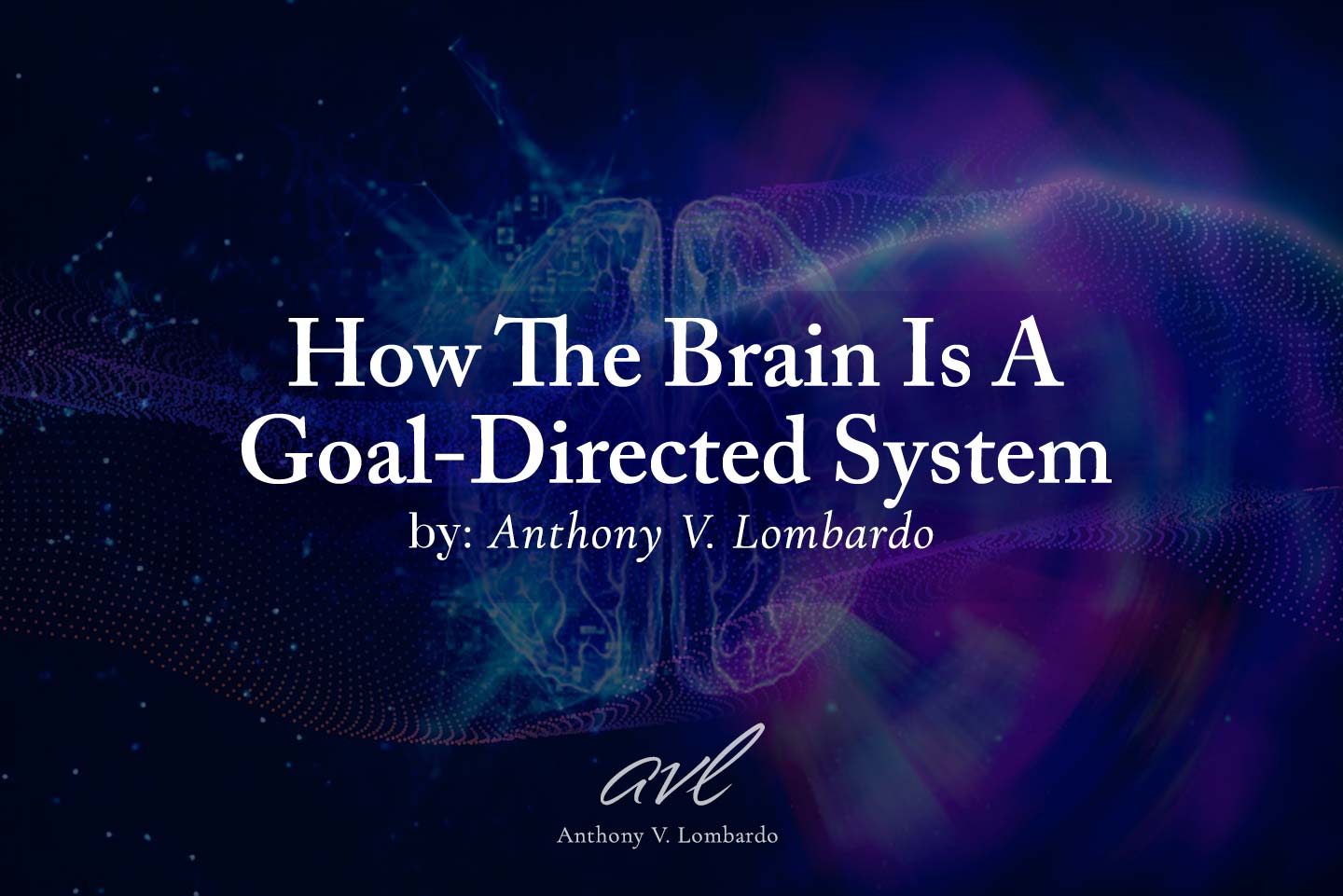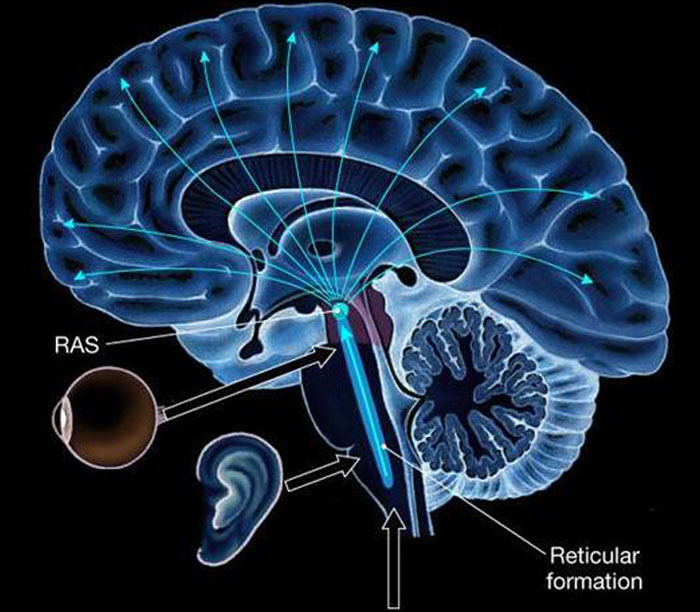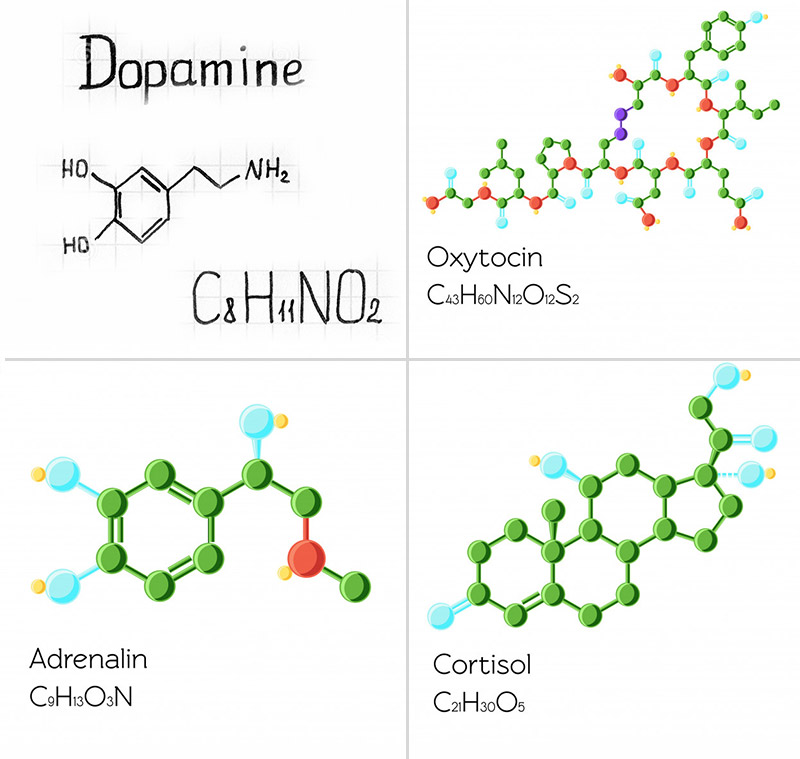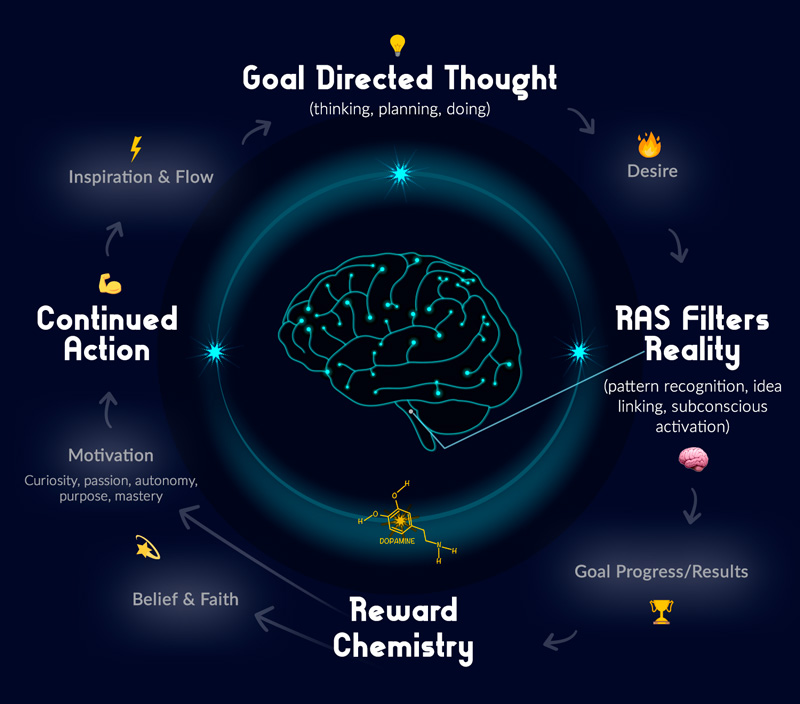
New Audio Experience: Awaken Your Soul and Remember Who You Are
How Goal-Setting and Manifesting Work in the Brain
Anthony V. Lombardo

You might be familiar with these four principles as critical ingredients for goal achievement:
- Directed thoughts. ?
- Unrelenting desire. ?
- The power of belief. ?
- Persistent action. ?
These principles or qualities have been endlessly written and bandied about throughout the personal development world and even in various spiritual teachings like the Law of Attraction as a major part of the formula for creating whatever you want in life.
This is widely referred to as “manifesting.”
Often characterized by the idea “thoughts become things” — and while that notion is often misunderstood, there is a science behind how setting a goal will automatically put your brain to work in achieving that goal.
? Your brain is built for goals. They get the wheels spinning in the direction you want to go.
This post aims to provide a simple overview of how those four components of thoughts, desire, belief, and action come into play when it comes to goals from a neuroscience perspective at the most basic of levels.
Consider it the “manifestor’s guide” to understanding the neuroscience behind goal-setting.
It will take a look at the following:
- Why having goals are essential for properly filtering reality.
- What you (and your brain) are really after when you set goals.
- How the brain’s Reticular Activating System works as the brain’s goal-setting mechanism.
- How desire and belief fit into the mix of goal-setting when it comes to the brain.
- How thoughts really do become things (sort of) from a neuroscience perspective.
How The Brain Filters Reality
The amount of data our brains take per second is immense.
Estimates for how much information the brain perceives on a moment–to–moment basis vary — ranging from 11 million bits all the way up to 400 billion bits per second.
Either way that’s a huge amount of data.
And even more interesting, it’s estimated that only 120 to 2000 bits out of that total is actually processed by our conscious awareness.
Let’s stay on the low end and use 11 million and consider that for a moment.
11 million bits of data flying at us per second. And at the high end, roughly only 2000 reach our consciousness.
Regardless of what numbers you use, the bandwidth of our consciousness in what we experience as reality is limited.
? Download the FREE Life Visioning Workbook ?
Enter the Reticular Activating System
One of the brain’s first tasks is to take these 11 million to 400 billion bits of data and condense them down into a smaller amount so our conscious awareness can process them into something that’s useful and fulfills our evolutionary needs.
This is all done in one of the most important parts of the brain in an area at its base known as the Reticular Activating System (RAS).

The RAS influences cognition and acts as a filter for all the bits of data flying at us, essentially eliminating all the white noise.
When a bit of information gets past the RAS filter it enters the cerebrum and is then converted into conscious thoughts, emotions, or both.
So what bits of information actually filters through to our consciousness?
In short, any information we deem important.
Whatever you focus on, your RAS will create a filter for it.
Our two big filters are fear and goals.
Fear is arguably our primary filter — mainly driven by our need for survival.
As part of our evolution, our brains are wired to always be on the lookout for what could threaten our survival.
It holds a major survival bias and because of this, fear tends to be one of our strongest motivators.
Goals: The Brain’s Reward System
The next big filter of our brains is goals.
Besides helping steer our awareness away from fear and survival, setting goals serves as a reward system for our brains neurochemically speaking.
Whether we achieve a long-range goal or merely check off an item on the day’s to-do list we receive a little hit of dopamine — and maybe some endorphins and oxytocin to go along with it.

These are bliss chemicals — they are what we feel as passion, joy, and excitement which are neurotransmitters that are kindled in the brain.
Even when we initially set a goal, the brain gets a quick hit of dopamine because we are excited that we are “getting in the game” so to speak.
And when we start to make progress on our goals or see results, it means our brain is getting more reward chemistry.
And more neurochemistry for our brains means increased motivation, productivity, and focus — all essential attributes to perform our best and achieve our goals.
When motivation goes up it connects back to our intrinsic drivers for setting our goal in the first place such as curiosity, passion, autonomy, purpose, and mastery. And each of these elicits corresponding emotions which produce more dopamine and norepinephrine which heightens our focus and attention.
Plus, we get a big boost of belief; we start to believe even more that we can actually achieve our goal.
In other words, the neurochemicals our brains are rewarded with for achieving or making progress on a goal gives us a big boost to achieve more.
And to our brains, this is like a “little win” each time.
Essentially achieving our goals becomes about getting those feel-good neurochemicals to keep showing up again and again as far as our brain is concerned.
And since our brains like this “high”, the feedback loop continues:
- We get results on our goals.
- Our brain is rewarded with neurochemistry.
- We enjoy the ‘high’ and are motivated to achieve more because we believe we can.
- Thus more momentum and energy get created towards further pursuing our goals.
It’s just the way our biology works.
Reticular Activating System and Goals
As the brain seeks out more reward chemistry, this is where the RAS goes to work.
When scientists talk about the RAS — in many ways they are referring to the brain’s goal-seeking mechanism. Our brains are good at finding information that meets our goals and needs. This harkens back to our early evolution as a species when our only goal was to find food while not getting devoured by that sabretooth tiger hiding behind the trees.
Our brains are wired to meet our goals and fulfill our desires both consciously and subconsciously.
When we give our brains a command by establishing a goal, it turns our brains into a goal-seeking missile or as Denis Waitley likes to say, a GPS, or “Goal Positioning System”.
Goals give our brains marching orders — a clear set of directions and instructions to carry out. It then goes to work by making necessary connections and recognizing patterns as we go about our lives so we can hit our target and achieve our goal.
This is essentially the magic of the RAS at play — when your brain has a goal, it filters reality (all those 11 million to 400 billion bits of data), showing you the relevant bits that pertain to (achieving) your goal.
Tell your mind where you want to go as clearly and as specific as possible and it will get you there.
This is what is meant by the notion that the conscious mind sets goals and the unconscious mind achieves them.
Or you might’ve heard the saying, “Your conscious mind is the goal setter and your unconscious mind is the “goal-getter.”
This is at the center of Neuro-Linguistic Programming (NLP); the science of how the influx of ideas, thoughts, language, and images can permeate the subconscious mind so it can work on the desired outcomes set by your conscious mind.
All of this makes goal-setting a powerful tool.
When your brain sets a goal that you are 100% behind, it filters your experience according to the parameters of your goal via the RAS, connects the dots with all other information it has available to it pertinent to your goal, and essentially aligns your subconscious with these desires.
The Role of Desire in Goals
Since it was mentioned more than once, let’s address desire. After all, what would a conversation on goal-setting be without mentioning desire?
You probably endlessly heard of the importance of desire for goal achievement. In Napoleon Hill’s classic “Think and Grow Rich”, he talks about having to work yourself up with “white, hot burning desire” to achieve what you want in life.
You probably also heard that desiring something too much vibrationally pushes it away from you. While desiring from a place of neediness and frustration will cause energetic resistance, desire is needed to get your brain focusing on what it wants to accomplish, so the RAS can do its thing.
The RAS’s ability to filter reality based on whatever you focus on is where desire becomes a key ingredient in reaching your goals.
From a neuroscience perspective, this is one way how “thoughts become things.” More fittingly though, it’s how thoughts that are directed as goals (actions) turn into bliss chemicals for our brain. (Remember our brains just want more reward chemistry.)

Recapping the process:
Directed Thought
You direct your brain to a goal that you are fully committed to (desire) and your brain begins to focus on it getting an initial hit of bliss chemicals.
RAS Filters Reality
Your brain starts showing you everything it has available to it (from those billions of bits of data) related to your goal by recognizing patterns and linking ideas together. The subconscious mind starts getting to work.
Goal Progress → Reward Chemistry
You start taking action and moving your goal forward. Your brain gets more reward chemistry which elicits more motivation, belief, and faith.
Persistent Action
The cycle continues. Since your brain enjoys the “high” it receives from making progress on your goals, it is motivated to seek out more reward chemistry. You take more action (because you believe your goal is possible and your desire is fueled) while the RAS continues to do its thing in filtering reality to get you what you want.
This indeed turns our brains into a goal-directed system.
And when that happens, we get tapped into inspiration. Focus becomes heightened. Procrastination seizes. Energy increases. Decision-making becomes cake. Taking proper action is a breeze.
It’s those moments when your head (logic), your heart (emotion), and your gut (intuition) are all pulling you in the same direction.
So without goals, you are blocked from this type of flow. You cut your brain off from inspiration.
Without having proper goals that you are fully committed to (desire), your brain essentially can’t filter reality properly.
For one, your brain will lean more towards fear and survival, thus having more available space to filter reality based on those lower states. This means fewer reward chemicals like dopamine and endorphins and likely more stress chemicals like cortisol and adrenaline.
Secondly, you get locked out from all the new information (ideas, insights, knowledge, etc.) your brain can and will seek out (connections, pattern recognition, idea linking, etc.) to help you actually get the outcomes you want in life.
So what is the answer to achieving your desires?
Simple. Put your ass brain in gear and start setting goals.
Or more neurologically speaking, start rewarding your brain by giving it some bliss chemicals.
Set goals, start taking action on them, feel the high, and rinse and repeat.
Motivation will mount and your belief will compound.
And as your brain keeps filtering reality, it will eventually reveal all the possibilities.
? Try the FREE Life Visioning Workbook ?
Join the tribe of Conscious Creators!
Walking the spiritual path?
Sign up for the You Are A Conscious Creator Newsletter which curates hand-picked wisdom and insights for living a more conscious and meaningful life.

